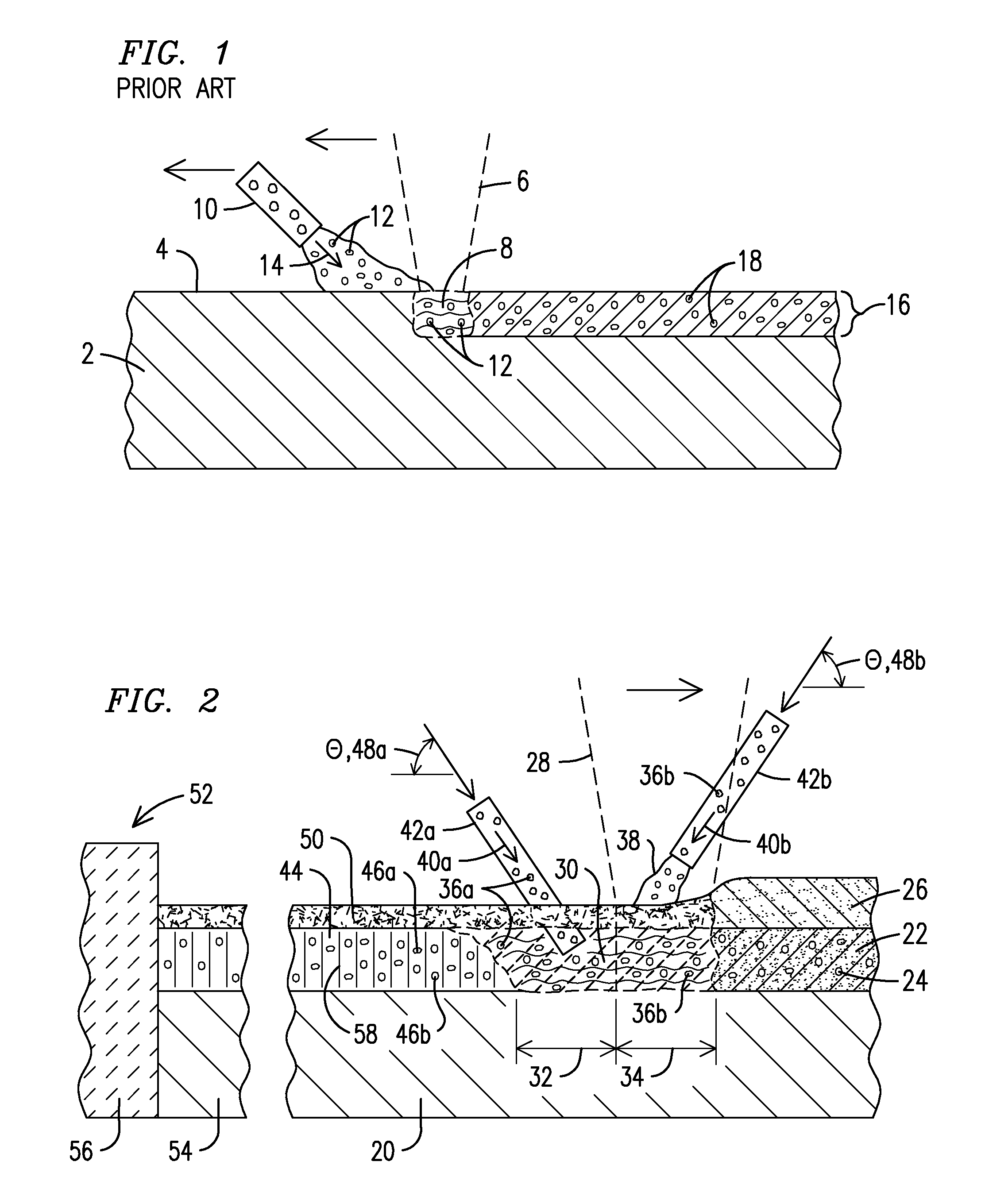Method to form oxide dispersion strengthended (ODS) alloys
a technology of oxide dispersion and alloy, which is applied in the field of metal component fabrication and repair, can solve the problems of uneconomical processing, significant loss of strength, and difficult weld and repair of ods alloys by conventional techniques, and achieves the effects of reducing the cost of processing, and improving the quality of ods alloys
- Summary
- Abstract
- Description
- Claims
- Application Information
AI Technical Summary
Benefits of technology
Problems solved by technology
Method used
Image
Examples
Embodiment Construction
[0013]The present Inventors have recognized that a need exists to discover methods for forming ODS alloys which avoid the disadvantages described above. An optimal method would allow both small-scale and large-scale formation of ODS alloys without the need to perform post-welding heat treatment or to use rigorously air-free conditions. Such a method would also provide an enhanced ability to control the distribution and characteristics of oxide particles contained in the ODS alloys, and to produce optimal grain shape and structure without performing secondary recrystallization heat treatment.
[0014]Disclosed herein are methods for forming oxide dispersion strengthened (ODS) alloys, in which oxide particles are injected into a molten pool of metallic material generated by an energy beam optionally in the presence of a flux material. The size and distribution of oxide particles contained in the resulting ODS alloys can be varied by controlling a number of factors including the melting p...
PUM
| Property | Measurement | Unit |
|---|---|---|
| Particle size | aaaaa | aaaaa |
| Particle size | aaaaa | aaaaa |
| Particle size | aaaaa | aaaaa |
Abstract
Description
Claims
Application Information
 Login to View More
Login to View More - R&D
- Intellectual Property
- Life Sciences
- Materials
- Tech Scout
- Unparalleled Data Quality
- Higher Quality Content
- 60% Fewer Hallucinations
Browse by: Latest US Patents, China's latest patents, Technical Efficacy Thesaurus, Application Domain, Technology Topic, Popular Technical Reports.
© 2025 PatSnap. All rights reserved.Legal|Privacy policy|Modern Slavery Act Transparency Statement|Sitemap|About US| Contact US: help@patsnap.com


